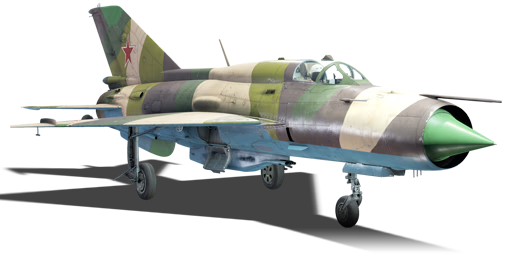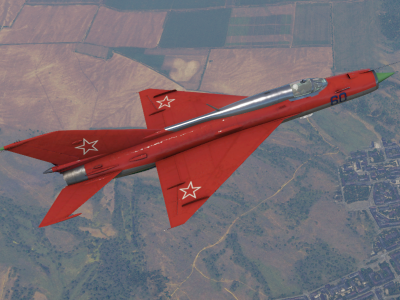

The MiG-21 (NATO Code: Fishbed) was a Soviet jet designed with the intent of replacing the older generation of subsonic fighters, which were becoming outdated and outperformed by their Western counterparts. It was developed in the 1950s and quickly became the most produced supersonic aircraft in history, with over 11,000 units built. The MiG-21 played a significant role in various conflicts around the world and was widely exported to many countries due to its affordability and effectiveness. The MiG-21PF series of aircraft was specialized for all-weather interception. It featured improved radar and avionics systems, allowing it to operate effectively in adverse weather conditions and at night. The aim of this series of aircraft was to mitigate potential dangers posed by enemy bombers and other high-altitude aircraft. Among these was the MiG-21PFM variant, which further enhanced the capabilities of the MiG-21PF series. It underwent various improvements and reductions, including the elimination of an internally mounted gun and an inflated fuselage section. As a result, the aircraft relied on a GP-9 gun pod mounted on the belly as well as external armaments like missiles and rockets.
The MiG-21PFM was introduced in Update "Hot Tracks" as a reward for the 2020 Operation W.I.N.T.E.R. event. Despite being equipped with a new RP-21M radar and 23mm GSh-23L cannons, the gameplay is very similar to that of the MiG-21F-13. One of the key strengths of the MiG-21PFM lies in its performance at high altitudes. Its powerful engine and aerodynamic design allow for swift acceleration and excellent manoeuvrability in the skies. This also makes the aircraft ideal for boom-and-zoom tactics. Furthermore, it should be mentioned that the aircraft can perform light CAS from greater distances thanks to the addition of Kh-66 missiles.
flaps
flaps
flaps
brake
| Name | Weight | Slot | ||||||
|---|---|---|---|---|---|---|---|---|
| 75.3 kg |  |  | ||||||
| 278 kg |  |  | ||||||
| 235 kg |  |  | ||||||
| 16 × | 110.2 kg |  |  | |||||
| 250 kg |  |  | ||||||
| 478 kg |  |  | ||||||
| 342 kg |  |  | ||||||
| 85.5 kg |  | |||||||
| Drop tank (490 liters.) | 70 kg |  | ||||||












Flight performance |
|---|
Survivability |
|---|
Weaponry | |||
|---|---|---|---|
